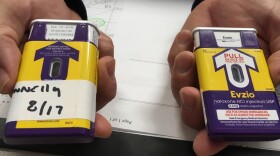With the explosion of opioid addiction in America, doctors and patients are looking for ways to avoid using the painkillers. For some, manipulative therapy could be a way out.
The chairperson of the Department of Osteopathic Manipulative Medicine in the MSU College of Osteopathic Medicine, Dr. Lisa DeStefano, says this kind of therapy can help some patients, particularly those with lower back pain, avoid opioids altogether.
We are positioning the patient and using muscle activities which restore joint function. - Dr. Lisa DeStefano
"Let's just look at the walking cycle," she explains. "We call it the gait cycle, when one puts one foot in front of the other. There's a lot of information that the brain and the spinal cord needs to understand in order to move through space effectively and free of pain. If the patient has joint disfunction, other muscles begin to take over because of the joint disfunction that begin to scream at the patient."
Manipulation doesn't stop that process, Dr. DeStefano continues, but it changes the relationship between the joint and the spinal cord, making that gait cycle more efficient. As a result, she concludes, the pain "has to go away. It doesn't have a choice."
They start to see that they don't need the pain medications as often. They start to have hope. - Dr. Lisa DeStefano
Patients are sent home with instructions about what to do between therapy sessions. Dr. DeStefano says common advice is to stretch the back by laying flat and pulling the knees to the chest, or bend over to touch the toes. The reality, she says, is that these methods are destabilizing to the pelvis.
There usually isn't much pain associated with this therapy. "We are positioning the patient and using muscle activities which restore joint function," Dr. DeStefano explains. "That's our goal."
She concludes that many of her patients say they no longer use opioids after receiving these treatments. In four or five visits, they report improvements in function. "They start to see pain free days," Dr. DeStefano concludes. "They start to see that they don't need the pain medications as often. They start to have hope."





